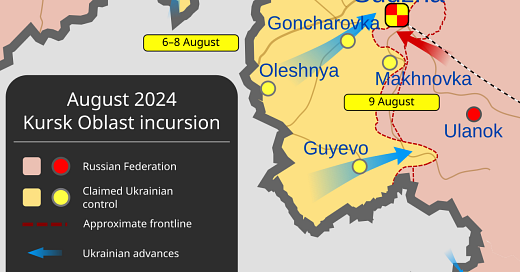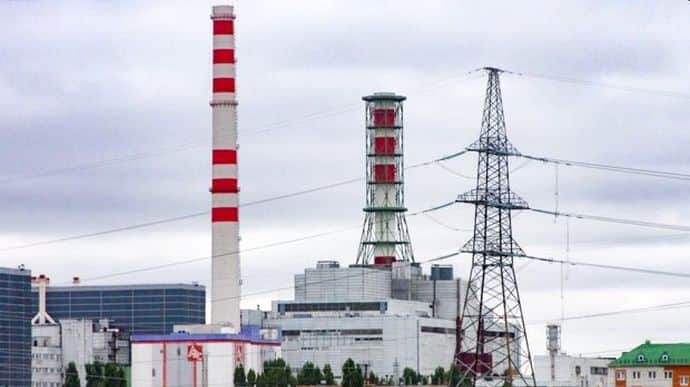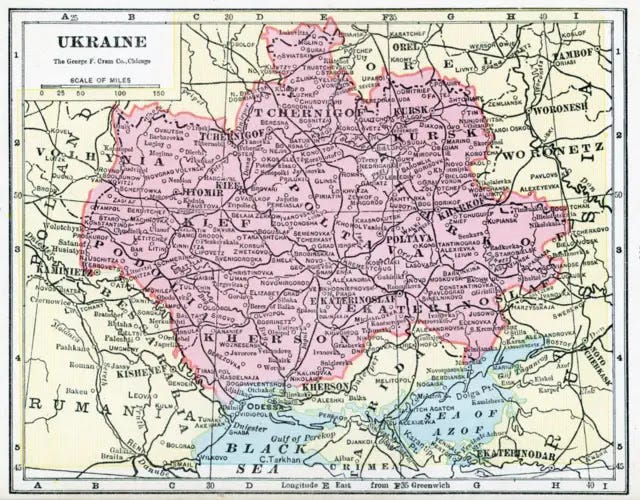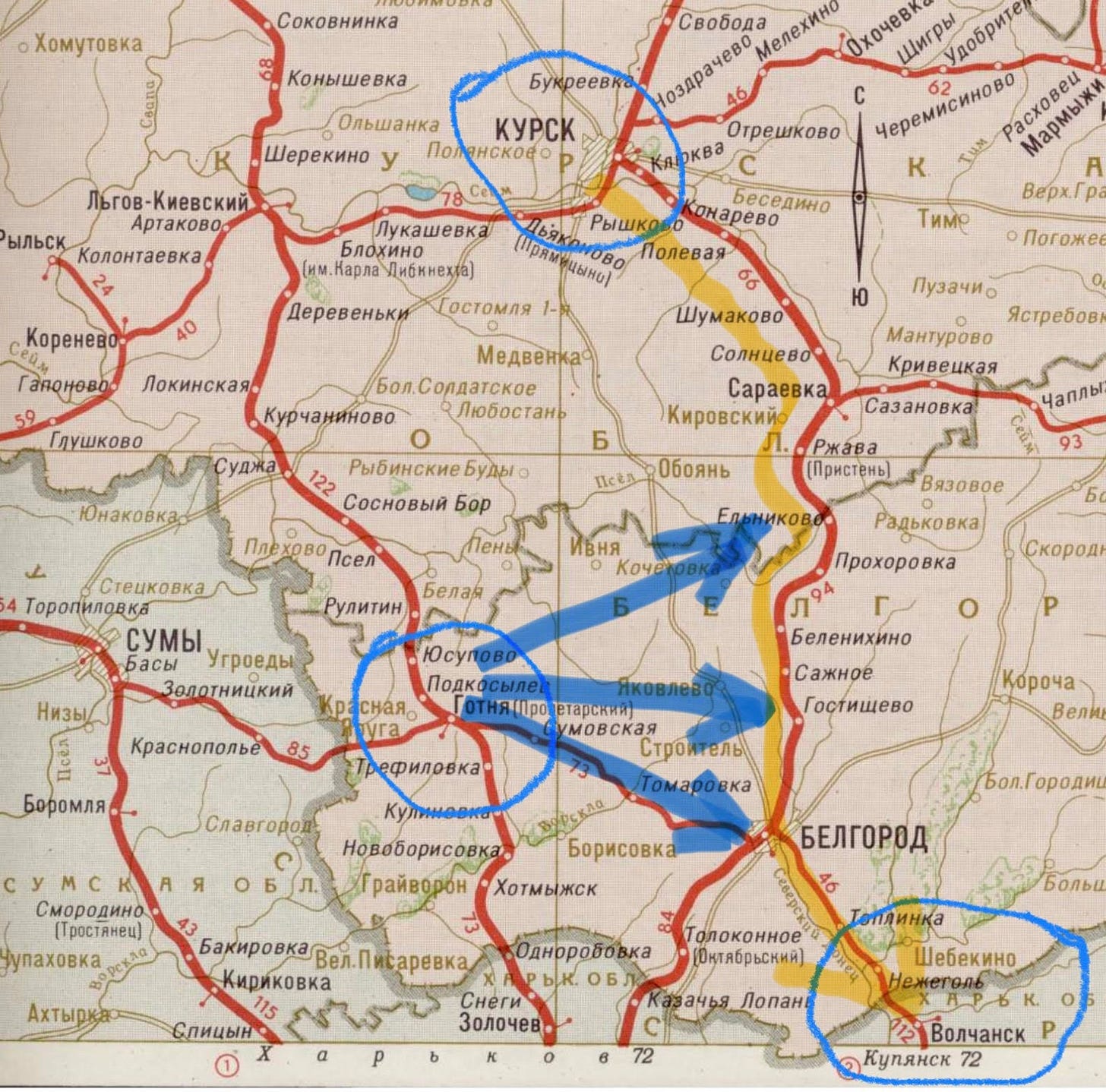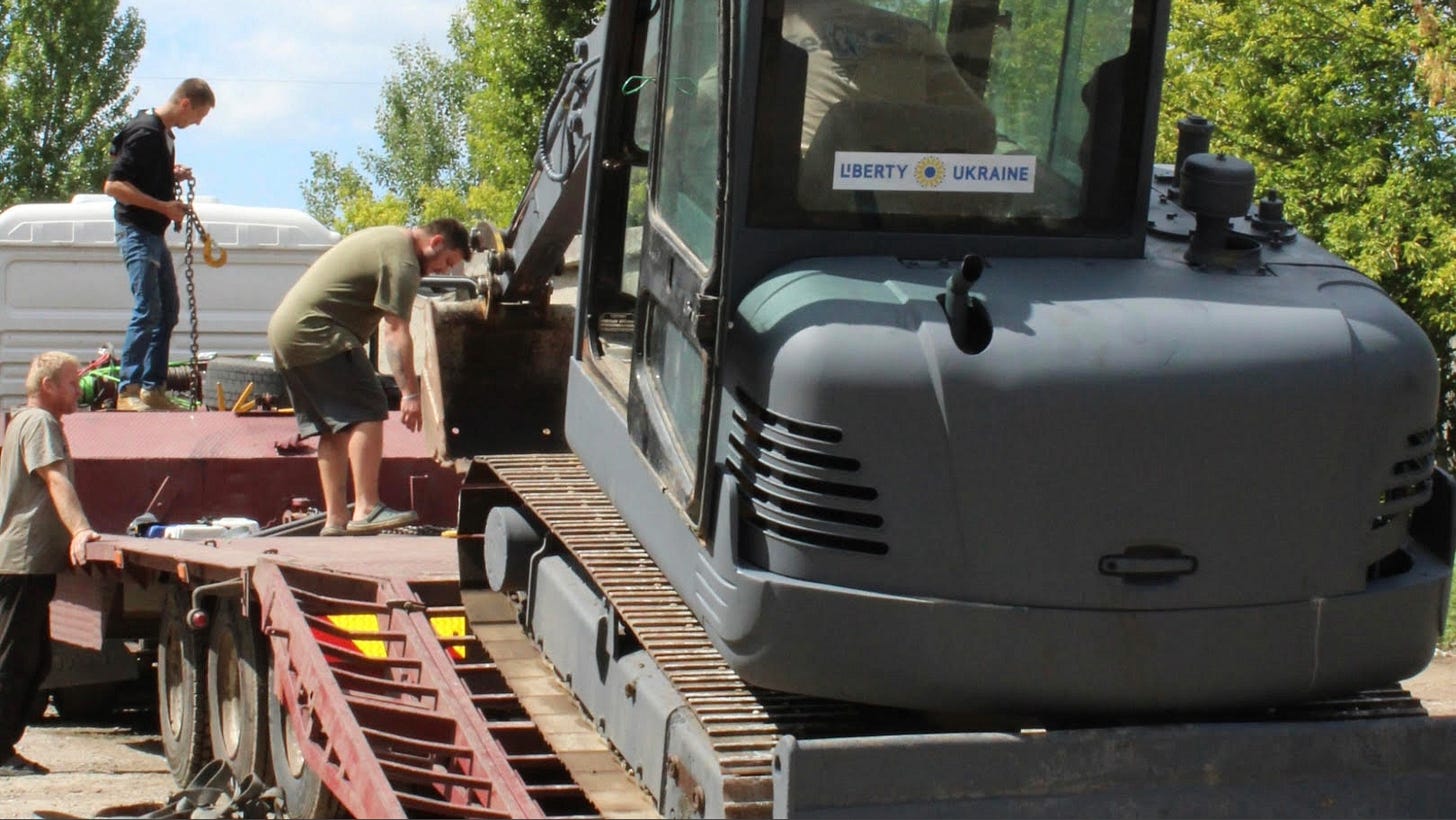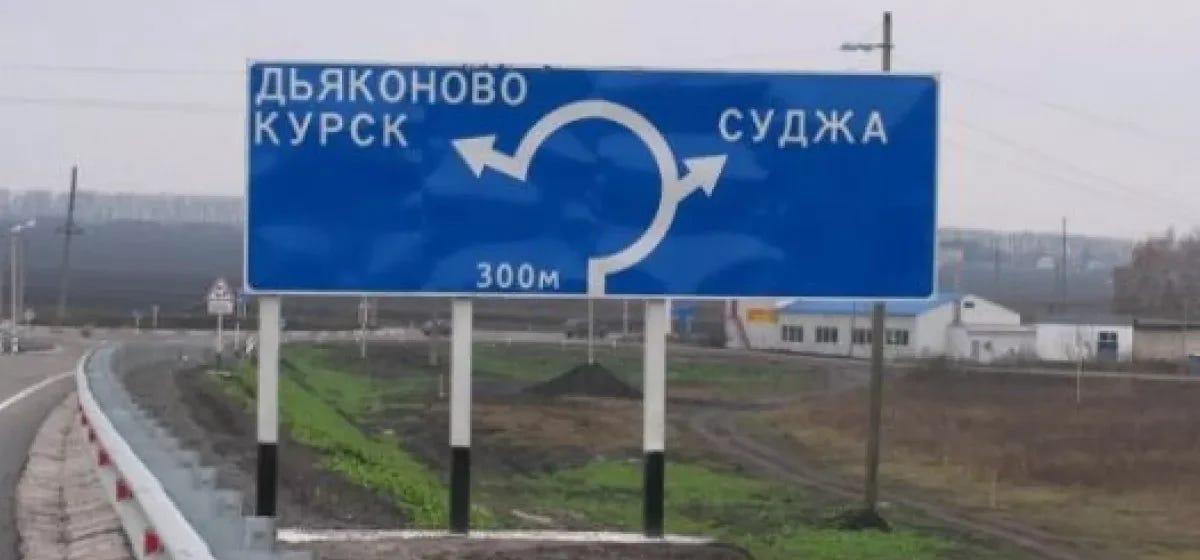Having completed the first week of Ukraine’s Kursk offensive one of the known knowns about the ongoing Ukrainian military operations inside Russia is that Ukrainian forces have seized control of the strategically important Russian city of Sudzha. Aside from this development the only other thing we know is that Ukrainian forces continue to advance and fan out in the Kursk region and are moving in a northern direction towards Korenevo but are also being deployed eastward and recently captured the village of Giryi in Belovsky district in the neighboring Belgorod region in the past 24 hours. To make matters worse for Moscow the Russian governor of Belgorod announced the appearance of Ukrainian mechanized units moving deeper into his district.
As of today an estimated 133,000 Russians have fled the Ukrainian offensive while an an estimated 28 settlements in the Kursk region were either under full or partial Ukrainian control. Ukrainian units are reportedly now digging in and preparing defensive positions. Russian refugees are jamming neighboring highways unleashing a major public relations nightmare for Russian President Vladimir Putin whose past performance during the Prigozhin mutiny continues to create a cloud of uncertainty about his standing among Russian elite. In fact, the Russian media has now started using the term “proval”, or downfall to characterize Putin’s handling of the Kursk offensive.
In the coming days, Ukrainian mechanized units - consisting of American made Strykers armored vehicles - are expected to reach the strategically important E38 highway that intersects with Russia’s Bryansk, Kursk, and Belgorod provinces. More importantly, this highway sits adjacent to the nearby Kursk Nuclear Power Plant (NPP)., less than 40 miles away.
Details on the size and composition of Ukrainian military units involved in the offensive are unclear. According to the Russian military blogger Rybar the key Ukrainian units participating in the offensive are the 82nd and 80th Separate Airborne Assault Brigades, which are supported by the 22nd and 61st Separate Mechanized Brigades of the Ukrainian Armed Forces. In addition, according to his data, the 150th Separate Mechanized Brigade, the 5th Airborne Assault Brigade, the 151st Brigade, and the 24th Separate Assault Brigade "Aidar" are also participating in the offensive. Ukrainian forces are estimated to number anywhere from 5,000 to 10,000 men as these units fan out across the Kursk region with objectives that remain unclear but are likely to last another several weeks.
Ukraine has secretly accumulated an estimated 14 combat brigades as part of its strategic reserve for the operation whose success according to Novaya Gazeta is due in part to Belarus President Aleksandr Lukashenko’s decision to withdraw Belarusian troops from its southern border with Ukraine which in turn reportedly freed up Ukrainian military manpower to use in its ongoing offensive. With 14 brigades in reserve, Ukraine certainly can add more resources into the offensive and hold on to the Kursk area for a prolonged period of time. Pro-Kremlin expert Sergei Markov, seems to agree. Markov recently said that it could take as long as a year at the Russian military’s current rate of progress” given its past performance in eastern Ukraine.[1]
So far the element of surprise has been on the side of the Ukrainian High Command led by General Oleksandr Syrsky. The Ukrainian general is regarded as one of the key architects of the vaunted 2022 Kharkiv counter-offensive, which retook 8,000 kilometers of Ukrainian territory previously seized by Russia. In less than a week, the Armed Forces of Ukraine have reportedly seized more territory than in the entire counter-offensive of 2023 and according to General Syrsky now consists of 1,000 square kilometers of newly captured Russian territory.
Ukrainian Goals and Objectives
Meanwhile, the rumor mill and X.com are ablaze with speculation over what exactly Ukraine’s long-term goals and objectives are with the recent offensive into Russia. Identifying those goals is mostly a guessing game among Western pundits and media experts caught by surprise by the Ukrainian offensive. One of the emerging views is that the Kursk 2.0 offensive is aimed at finding relief to Ukraine’s other fronts where Russia has been pressing for the past year.
Last week Ukrainian sabotage and reconnaissance units were rumored to be on the outskirts of the Kursk Nuclear Power Plant (NPP) located at Kurchatova as some commentators thought that one of Ukraine’s strategic objectives might be to seize control of the nuclear facility (250 miles from Moscow) that supplies most of the Russian Federal District with electricity which includes 40 million people and more importantly supplies the Russian capital with the bulk of its electrical power.
The rationale behind a Ukrainian attack to seize the Kursk NPP is that Kyiv would be replicating what the Russians achieved during Moscow’s 2022 invasion when in March of that year Russian forces seized the Ukrainian nuclear reactor in Zaporozhia. The Zaporozhia Nuclear Power Plant (NPP) remains heavily mined and defended by Russian forces. Some experts suggested that Ukraine might seize the Kursk NPP to use as a bargaining tool in any future negotiations with Moscow.
Speculation on such a move, however, more or less has diminished due to international concerns about the implications of Ukraine seizing the Russian nuclear power plant which sits 65 kilometers outside the city of Kursk. The nuclear plant is in close proximity to the northernmost Ukrainian forward units racing north toward the East-West E38 highway, which reportedly include Polish made 155-mm Krab self-propelled artillery as part of the Ukrainian armored units but this report has not been confirmed.
Russian concerns about the danger to the Kursk NPP were exacerbated by reports that the nuclear facility was defended by a Russian all-female auxiliary unit because all available able-bodied Russian military personnel had been deployed to the frontlines inside Ukraine. The Russian media however has since reported that the Kursk NPP has been reinforced by members of Rosgvardia, the Russian National Guard. Regardless, the nuclear facility might still be an objective for Ukrainian forces but is highly doubtful as the Ukrainian mechanized units appear to be close to outracing their logistical supply lines in the south.
As the seizure of the Kursk NPP has become less of a possibility for Ukrainian forces, attention has turned to other possible Ukrainian strategic goals. A new clue to these objectives is that in the past 24 hours Ukrainian forces captured Belskiy in the neighboring Belovsky district in Belgorod expanding the foothold of Ukrainian forces in Belgorod creating a potential cordon sanitaire for its new base of operations inside Russia.
The Strategic Importance of Sudzha
High on Ukrainian goals with the Kursk offensive is the expectation to use Sudzha as a bridgehead in the north to force Moscow to reallocate forces in Vovchansk by threatening Russia’s Ground Lines of Communication (GLOC) to its ongoing military operations inside northern Ukraine, which Moscow refers to as Task Group North.
Ultimately, it appears Kyiv’s goal with the offensive is to reduce Russian military attacks inside Ukraine and bring relief from these attacks which have made incremental progress in recent months. In eastern Ukraine and north of Kharkiv these attacks have been increasing in intensity. Russian offensive operations along the Toretsk-Pokrovsk-Niu York front in Donbas has increasingly threatened Ukraine’s citadel in the East - Kramatorsk.
Increasingly it appears that Ukraine intends to establish Sudhza as a new forward base of military operations inside Russia. This would enable Kyiv to pursue one of its primary goals of threatening Russia’s GLOC with Russian forces pressing northern Ukraine in the city of Vovchansk. Since July Vovchansk has become Russia’s most recent offensive bridgehead inside Ukraine threatening the Ukrainian city of Kharkiv, its second largest city. Because Sudzha sits adjacent to the north-south E105 highway from Kursk (see map) Ukraine can use the city to launch strikes on the road and rato Belgorod to disrupt supplies to Russian forces in Vovchansk.
Sudzha, a city 500 kilometers southwest of Moscow (330 miles) has important historical significance to Ukraine. With a population of approximately 5,000 inhabitants it is located in the Russian administrative area referred to as Kursk Oblast. Sudzha, however, was founded in the middle of the 17th century by Ukrainian Cossacks of the Sumy Regiment, and the settlement previously belonged to Kyiv province. According to an 1897 census, 7,433 people lived in the city, of which 61% of the population indicated that they were Ukrainian (then "Little Russian") in their native language. During the Ukrainian liberation struggle of 1917-21, Sudzha was the scene of numerous battles between Soviet troops and German-armed Ukrainian forces. The city changed hands several times and on many maps from this period, it is marked within the borders of the Ukrainian state.
Sudzha’s economic importance is derived from its role as a key gas distribution and railway hub. As a gas distribution center the Sudzha station is the last operating transshipment point for Russian natural gas processing that goes through Ukraine to Europe. In 2023 the Urengoy-Pomary-Uzhhoro pipeline transported about 14.65 billion cubic meters of gas to Europe and accounts for approximately half of Russian natural gas exports. [2]
For Ukrainian military planners the immense strategic importance of Sudzha is related to its role as a regional railroad hub which is part of an extensive regional Russian railway network. Its railway nodes allow the city to serve as a principal logistics hub for Russian forces operating in the Kharkiv region. Sudzha’s railroad lines are also connected to the adjacent Belgorod region (see map above) creating a spoke and wheel network of supporting railroad lines for the Russian theater of military operations, better known in Russian as a Teatr Voennoye Deistvie (TVD). Ukrainian control or even its interdiction of the Sudzha railroad line would significantly disrupt Russian logistical chains, and disrupt operations across a vast section of the Russian front operating against Kharkiv noted Ukrainian military expert Bogdan Maftei.
As the regional railway spigot, Sudzha district also contains:
The Lgov-Belgorod railway, which supports the needs of the Russian Kharkiv grouping.
A TV tower that broadcasts propaganda to the border areas of Ukraine.
Contains several bypass roads which enhance Moscow’s ability to destabilize the Ukrainian border region.
Ukraine Digs In
Having seized Sudzha, not surprising Ukraine is digging in. On Monday, August 11, the Russian media reported that Ukrainian forces were starting to build fortifications in the area as images appeared of the Ukrainian the 225th mechanized brigade unloading a bulldozer recently delivered from Kharkiv. This equipment is likely to lead to the construction of a new series of fortified lines that will enable Ukrainian forces to utilize Sudzha’s extremely hilly and forested terrain for a new defensive line. Moreover, thanks to the successful offensive Ukraine can now use the pre-existing Russian fortified structures to become the nucleus for a new fortified base inside Russia.
With its new bridgehead in the north Ukraine would be in the position to exert fire control over Russian critical Ground Lines of Communication (GLOCs) to the east along the north-south E105 highway that supplies Russian forces in the neighboring Belgorod region. Ukrainian forces could severely degrade Russia’s ability to supply and reinforce its Task Group North in Kharkiv.
The Sudzha bridgehead will also force Russian logisticians to rely on longer, more vulnerable supply routes, stretching their resources thin and creating opportunities for further Ukrainian advances or interdiction efforts spear headed by Ukrainian sabotage groups. The bottom line is that by threatening multiple GLOCs simultaneously, Ukrainian forces can create a complex set of problems for Russian military planners, forcing them to allocate resources to protect supply lines rather than conduct offensive operations against Kharkiv giving Ukraine much-needed strategic depth, not too mention a major bargaining chip in future negotiations with Moscow.
Meanwhile, Russia has reacted at an almost glacial response to the Ukrainian offensive as it sorts out militarily which entity inside the Russian government will deal with the new “counter-terrorism” operation. Russian State Duma member, Andrey Gurulyov, a member of the Russian Duma and a former military commander of the southern district indicated the level of difficulty Russian forces might encounter in retaking the area when he recently said that the Russians should not expect a quick victory over Ukrainian forces in the Kursk region, acknowledging that Ukraine has deployed significant resources for their offensive. He added that the situation would require extensive and prolonged effort, contradicting earlier optimistic claims of a swift resolution.
As noted earlier, and worth emphasizing again, Pro-Kremlin analyst Sergei Markov warned that Russian troops would have great difficulty dislodging Ukrainian forces from the Kursk region noting: “if they act at the same speed as Russia is attacking elsewhere,” he said “it could take a year to take back the Kursk region.
Ukraine’s New Strategic Options
Given the slowness of the Russian response to the Ukrainian offensive, it is important for Western security experts to consider thinking about what the strategic implications might be for Ukraine by capturing Sudzha. It certainly offers Kyiv several short-term and long-term opportunities to disrupt Russian operations in the region.
Over time and with adequate reinforcements Sudzha will likely become a major bridgehead for Ukraine to not only threaten the supply lines of Russian forces but also endanger major Russian air bases located around the city of Kursk. The Russian air base at Lipetsk, for example, is a major air hub for the Russian air force, housing Su-57s, Su-34s and other fighter aircraft and is a major training training center for Russian pilots using the Su34s. Both Lipetsk and Khalino are major storage facilities for Russian Glide Bombs and other weaponry. Khalino has been repeatedly attacked by Ukraine in the past week because of its strategic importance to the Russian Air Force. It is also worthwhile to mention that the Kursk Vostochny Airport is also one of three major Russian launching areas for Iranian Shahed drone attacks being used against Kyiv and other Ukrainian cities that have terrorized Ukraine this past summer. Taking out these drone facilities is also high on Ukraine’s list of priorities.
By retaining a forward presence in Sudzha Ukraine would be in a better position to interdict these aerial attacks from Kursk. Kyiv could deploy its short-range Tochka ballistic missiles and long-range drones to halt these air strikes in airfields located around the city and would permit Ukrainian air defenses to have better options for early warning detection measures to stop the Shahed onslaught against Ukrainian civilians.
The Sudzha bridgehead may also compel Putin to weaken Russia’s ongoing military operations inside Ukraine to deal with the threat of a Ukrainian base threatening Kursk. It would also present officials in Kyiv with a bargaining chip should Putin introduce a ceasefire halting the war and the onset of peace negotiations.
Ultimately, this leaves Kyiv in a better negotiating position with Moscow. To quote Bismarck, President Zelensky has “rolled the iron dice” to see where they land by launching the Kursk offensive and in the process one of his major accomplishment will have been the destruction of Soviet mythology built around the original 1943 battle of Kursk fought 81 years ago this month that is part of Putin’s Soviet nostalgia and in the process created a new chapter in Ukrainian statehood.
[1] According to Russian sources Moscow has taken 420 square kilometers (162 square miles) of territory from Ukrainian forces since June 14. https://www.reuters.com/world/europe/ukraine-keeps-up-air-attacks-russias-kursk-regional-governor-says-2024-08-07/
[2] Approximately half of Russia's natural gas exports to Europe still pass through Ukraine. The other half of Russia's European gas pipeline exports go via Turkstream under the Black Sea.

